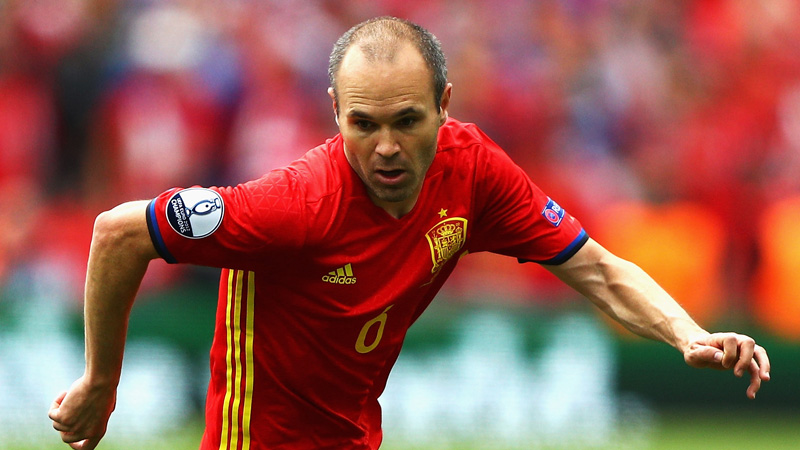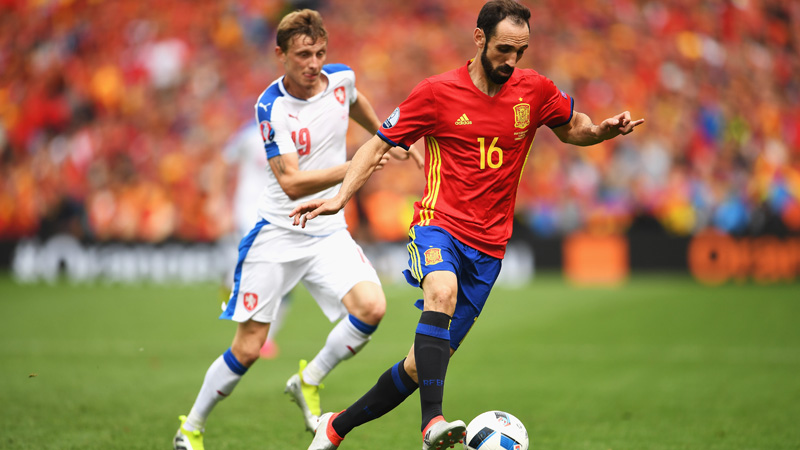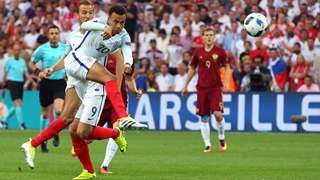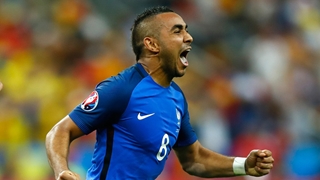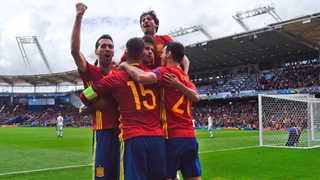
Spain had to wait 87 minutes to make the decisive breakthrough against a stubborn Czech Republic side in their opening game of Euro 2016.
Here, FA Education Content Editor Peter Glynn outlines how Vicente del Bosque’s side stayed true to their identity during their 1-0 victory, outlining a number of discussion areas for coaches.
Spain 1-0 Czech Republic
UEFA Euro 2016
Group D
Monday 13 June 2016
Stadium de Toulouse, France
1. Belief in the approach
Perhaps the most impressive aspect of Spain’s 1-0 victory over the Czech Republic in their opening game of Euro 2016 was the demonstration of unwavering belief in their style of play and attacking strategy.
Although Spain monopolised possession throughout, they created only a handful of goal-scoring opportunities until Gerard Pique’s 87th-minute header.
However, the lack of goal-scoring chances was not enough to shake Del Bosque’s men from their approach. Whereas other nations may have been tempted to panic and revert to an alternative, Spain continued to patiently pass, prod, probe and penetrate. Ultimately they were rewarded for their self-belief.
Monday afternoon’s win can be counted as a victory for staying true to their identity and further highlights their belief in wearing down opponents through ball retention in order to craft an incisive opportunity to win the game.
2. Andres Iniesta: the brain of Spain
Reflecting on Andres Iniesta’s first showing of the tournament, former Germany captain Lothar Matthaus described the 32-year-old as “The boss: the brain of the Spanish team."
For many years, the Barcelona midfielder was lauded for his role as part of a club and country double-act with fellow midfield magician, Xavi. Now his partner in perfect passing has retired from the international stage, Iniesta excelled in his role as Spain’s midfield “boss”.
Iniesta’s skillset provides a challenge to the traditional understanding of the profile of a midfielder. As comfortable dribbling into a congested penalty box as delivering incisive through passes between and beyond defenders, Iniesta is a fusion of passing playmaker, creative Number 10 and weaving winger.
3. Curled passes for forward runners
Iniesta - predominantly right-footed - regularly looked to receive passes infield from the left of Spain’s midfield.
From here, the midfielder would look to dart inside, often driving past his immediate opponent with a quick change of pace, before attempting to thread and curl through-passes for forward runners. It was through this method that Iniesta produced the cross for Pique’s decisive header.
The sight of Iniesta with the ball at his feet – particularly when cutting in from the left – acted as a movement trigger for Spain’s multiple forward runners to dart between and beyond the opposition backline.
In particular, right back, Juanfran, repeatedly looked for Iniesta’s cross-field curling passes by making runs inside from the right wing.
4. Spain’s lopsided attack
The many tactical and team formation diagrams accompanying Euro 2016 guides, could mislead some to believe that team arrangements are largely symmetrical.
Here, particularly in the first period, Spain showed why that is not always the case.
Whereas Celta Vigo winger Nolito remained largely high and wide on the left of Spain’s attack, David Silva was given creative licence to wander in from his perch on the right wing. At times, the Manchester City attacker could even be seen drifting over to left of the attack to combine with Nolito.
Silva’s movement infield allowed Juanfran to make regular overlapping runs beyond him on Spain’s right.
5. Creative solutions to unlock congested defences
Given Spain’s domination of possession and superior technical qualities, Czech Republic were content to concede both the ball and pitch territory to their opponents.
Faced with eleven men behind the ball for large parts of the game, del Bosque’s side were challenged to find creative solutions to open up the massed ranks of Czech defenders. Although Iniesta provided the guile and execution to create the 87th minute goal, future opponents may be less giving.
With more contests predicted between those who want the ball and those that can’t have it, will the winners of the tournament be the team that finds the most creative solution in the face of a congested defence?
Peter Glynn is FA Education Content Editor and will be providing comment and analysis throughout Euro 2016. Peter is editor of The FA’s coaching magazine, The Boot Room, and is a holder of the FA Advanced Youth Award and UEFA B coaching licence.
*The views expressed in this article are those of the author and not necessarily The Football Association.

